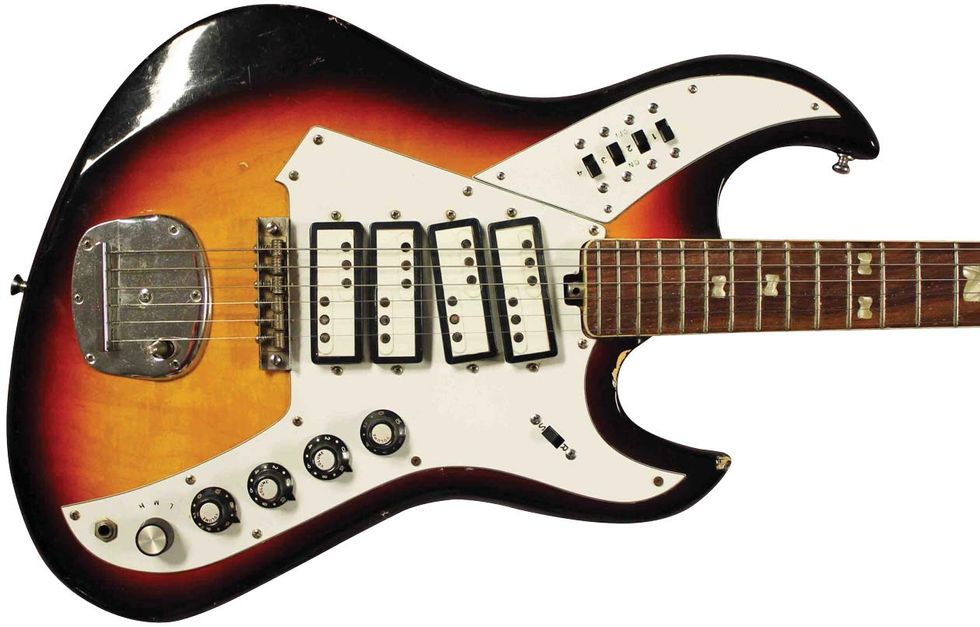If you grew up in the ’70s and ’80s, you likely recognize the Aria brand. The company was founded by Shiro Arai in Japan, and while his main business was importing/exporting all sorts of goods, his side passion was playing guitar. Eventually, the two components of his life merged in the ’60s, and we still see Aria-branded guitars today.
There’s a somewhat similar story involving the Sackheim family in the U.S., but minus the guitar playing part. Norman Sackheim and his son, Ron, were in the nuts-and-bolts business, and they imported hardware from Japan through their connections there. The Sackheims were based in Chicago, Illinois, which was a primary hub city for importing instruments in the early ’60s. After having a conversation with Ed Targ of the large musical instrument dealer Targ & Dinner, Norman saw an opportunity. Soon, his Strum & Drum company was born, and the company’s Norma-branded guitars started to appear all over the United States.
Photo 2
In the mid 1960s, the nuts-and-bolts importers ran a rather impressive showroom with a complete line of instruments, including drums, guitars, and basses. And their wares often featured some dramatic design flair, with plenty of personality. Strum & Drum initially used a Japanese harmonica factory called Tombo—which still exists today—to build all their sparkle-covered guitars that were adorned with plenty of switches and knobs. Eventually, however, Strum & Drum began buying guitars from many different factories, using the same hardware buyer in Japan named Eddie Wakayama. See? Nuts and bolts to guitars: easy peasy! (Eddie Wakayama eventually ended up playing a major role in guitar production in Japan, but that’s a story for another time.)
Strum & Drum had a pretty good run that coincided with the rise and fall of the first electric-guitar boom. The company existed from 1963 until the mid ’70s, shortly after Norman passed away. I got to know his son, Ron, pretty well, and talking with him was like perusing an old history book with plenty of jokes and one-liners scribbled in the margins. He was always a bit surprised that anyone had any interest in the business, but when you think about it, people like the Sackheims helped get instruments into the hands of kids all across America.
Photo 3
For this piece, I wanted to highlight one of Strum & Drum’s most collectible and gonzo electric guitars: the Norma EG 421-4 (Photo 1). The guitar featured all the extreme design elements of the time—which were made even more extreme by Strum & Drum—including four pickups (Photo 2), a boatload of knobs and switches, and an aggressive look that resembles a prehistoric raptor. Check out the “N” inlays, the oversized headstock (Photo 3), and the saber-toothed pickguard!
This EG 421-4 model was sold alongside a two-pickup version called the EG 450-2, the 12-string EG 412-2T (with a tremolo), and a bass called the EG 467-2B. The split-coil pickups on the EG 421-4 are pretty weak and thin-sounding, and definitely benefit from a boost pedal to get some good grind going. Regardless, if you actually make it onstage with a Norma EG 421-4, you’re probably going to garner some attention. And speaking of attention, let’s give a little to the hardware guys who dove right into the music biz to produce some pretty cool guitars. Cheers!
See and hear this 4-pickup, control-packed Norma EG 421-4 demoed by Mike Dugan.





















